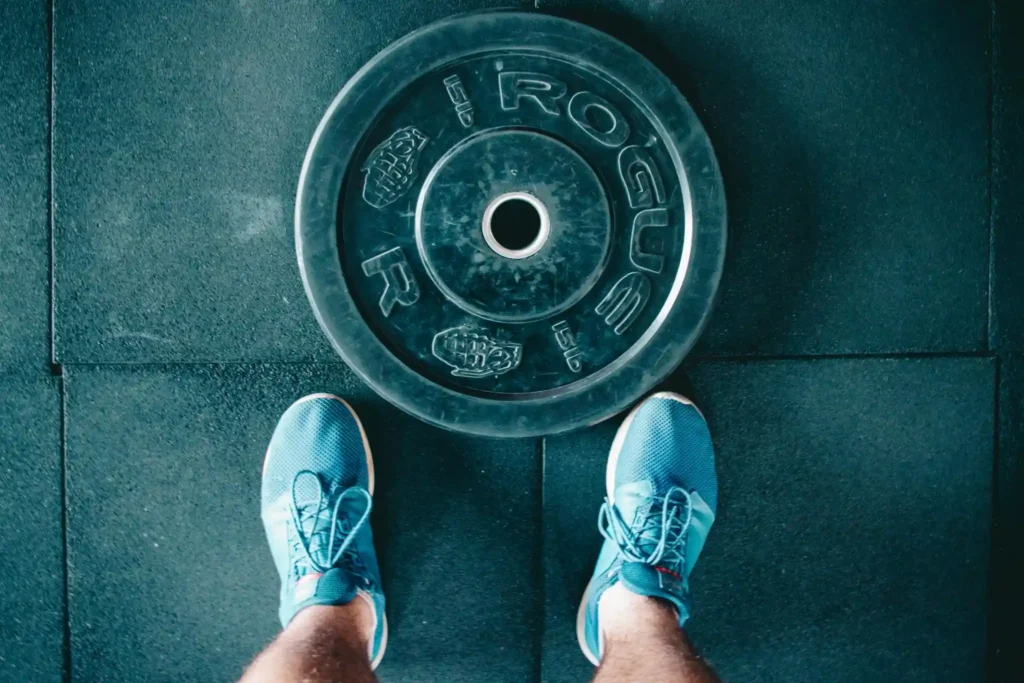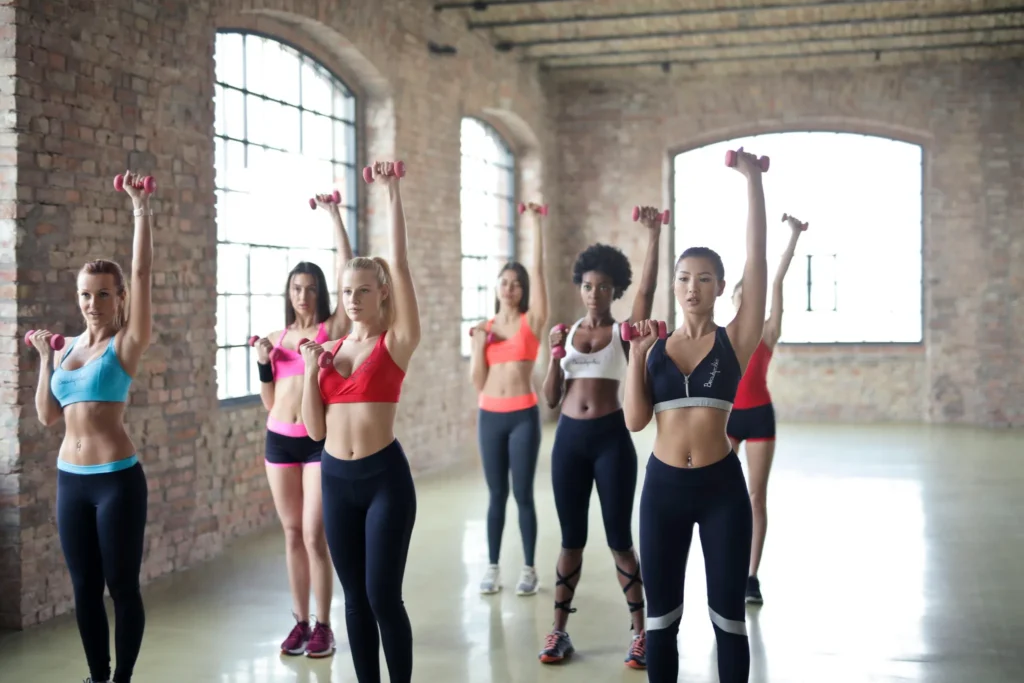
Learning how to start your fitness journey can be exciting, but it’s also where most people make avoidable mistakes. If you’re new to lifting weights or just getting into the gym, understanding the common beginner gym mistakes — and how to avoid them — can save you from injury, burnout, and wasted time.
Below are the biggest gym mistakes beginners make and what you should do instead to build muscle, strength, and confidence the right way.
One of the most common beginner mistakes is showing up to the gym with no idea what to do. You might wander from machine to machine or copy someone else’s workout. This leads to inconsistency and poor results. Random workouts give you random progress.
Instead, follow a structured workout plan. Even a basic full-body routine three times per week can help you train each muscle group evenly and stay on track. Programs like Push Pull Legs or full-body splits are great starting points.
Use a training log or app to track your reps, sets, and weights. Knowing what you’re doing before you start will help you stay focused and progress faster.
Going Too Heavy, Too Soon: A Common Beginner Mistakes in the gym
Ego lifting — trying to lift heavier than you should — is a fast track to poor form, stalled progress, and potential injury. Many beginners assume that the more weight you lift, the more progress you’ll make. Others might feel pressured to “prove” themselves in front of others at the gym. But the truth is, lifting heavy before you’re ready does more harm than good.
When you overload your body without proper technique, you shift the stress away from your muscles and onto your joints, tendons, and ligaments. This significantly increases the risk of shoulder impingements, lower back strain, or even more serious injuries like muscle tears. You may also end up compensating with the wrong muscles — using momentum, twisting your spine, or arching unnaturally — which sets you up for bad habits that are hard to unlearn.
Instead, start with light to moderate weights that allow you to complete each rep with clean, controlled form. Use a mirror or film yourself to check your movement, or ask a coach or experienced lifter for feedback. Focus on engaging the correct muscles during each lift. Learn how it feels to do the movement correctly before trying to challenge yourself with heavier loads.
Once you’ve built a solid foundation, apply progressive overload by gradually increasing the weight, reps, or sets. For example, if you’re benching 40 kg for 10 reps easily with perfect form, consider adding 2.5–5 kg the next week. Small, steady increases are more sustainable and safer than trying to jump 10–20 kg at once.
Remember: no one is judging you for starting light — in fact, most experienced lifters respect those who prioritize form. Real strength is built over time, not overnight. Stay patient, lift smart, and your numbers will grow naturally.
Skipping Compound Movements
Another common beginner mistakes in the gym is over-relying on machines or isolation exercises while skipping compound movements. Machines may feel safer, but they don’t engage your body the same way compound lifts do.
Exercises like squats, deadlifts, overhead presses, and rows recruit multiple muscle groups and develop functional strength. They also help improve coordination, balance, and stability. Even bodyweight variations like push-ups and bodyweight squats are excellent for building a solid foundation.
Compound exercises are the backbone of any good workout program. Learn them early and build from there.
Not Warming Up: A Common Beginner Mistake
Many new lifters head straight to the weights without warming up. That’s a mistake that increases the risk of injury and limits your performance.
A proper warm-up routine increases blood flow to your muscles, activates your nervous system, and prepares your body for heavy lifting. Try 5–10 minutes of light cardio (like walking or cycling), followed by dynamic stretches and warm-up sets using lighter weights.
Warm-ups aren’t optional — they’re a necessary part of long-term training success.
Neglecting Recovery and Sleep
Recovery is where the magic happens. It’s during rest that your muscles grow, not while you’re lifting. Training hard without rest leads to overtraining, poor performance, and mental fatigue.
Many beginners push themselves too hard, thinking more is better. In reality, rest days and 7–9 hours of sleep per night are crucial for muscle repair, hormone balance, and mental recovery.
Schedule at least one or two rest days per week and listen to your body. Prioritize sleep, manage stress, and don’t skip recovery.
Ignoring Nutrition as a beginner mistakes in the gym
One of the biggest beginner mistakes is underestimating the role of nutrition in your fitness journey. What you eat affects your energy, recovery, muscle growth, and fat loss.
Focus on real, whole foods. Eat enough protein to support muscle repair — aim for around 1.6 to 2.2 grams per kg of body weight. Include complex carbs like oats, rice, and sweet potatoes for sustained energy, and healthy fats like avocado and nuts for hormonal support.
Stay hydrated. Dehydration can limit strength and endurance, especially during intense workouts.
For more nutrition advice, check out Healthline’s beginner nutrition guide.
Not Tracking Progress
You won’t know if you’re improving if you’re not tracking your workouts. Many beginners train by feel and wonder why results don’t show up and this is one of the common beginner mistakes in the gym
Use a simple notebook, spreadsheet, or fitness app to record your exercises, sets, reps, and weights. Seeing your progress week by week helps with motivation and allows you to adjust your routine when needed.
Also, track how you feel, how you sleep, and even how your clothes fit — progress isn’t just physical.
Comparing Yourself to Others
This is a mindset trap many beginners fall into. You see someone benching twice your weight or doing 15 pull-ups and suddenly feel like you’re behind. But remember, your journey is your own. Everyone starts somewhere.
Focus on small wins: doing one more rep, improving your form, or showing up consistently. That’s what leads to long-term results.
Comparison leads to discouragement. Progress comes from consistency, not competition.
Final Thoughts on Avoiding Beginner mistakes in the gym
Everyone makes mistakes in the beginning — it’s part of learning. What separates those who succeed from those who quit is the willingness to learn and adjust.
Avoiding these beginner gym mistakes will help you train smarter, stay safe, and build results you can feel proud of. The gym doesn’t need to be complicated — just consistent.
Start smart. Track your progress. Fuel your body. Respect recovery. And most importantly — keep showing up.
For beginner workout plans and nutrition advice, explore more guides on the Lift Evolve homepage.
Let’s lift. Let’s evolve.

